6/2005
SPATZ - Sparrows Over Haule-Savoie
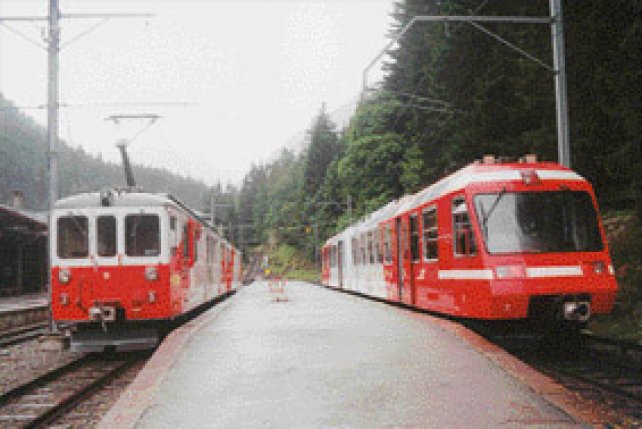
In March 2003 SNCF ordered from Stadler three SPATZ EMUs (Class Z-850/Class Be 4/8) for the 57km, 850 V DC (third rail), metre gauge line which, skirting the northern slopes of Mont Blanc, runs from Saint Gervais and Chamonix via Vallorcine to Salvan and Martigny in Switzerland. This route is notorious for its sharp curvature and stiff adhesion gradients, while on the Swiss side it also has a rack section on the precipitous descent into the Rhône valley. The superb scenery makes this railway very popular with tourists. All three Mont Blanc EMUs were delivered in the first half of September 2005, and are now on test.
Le Chatelard-Frontiére, the interchange station between Swiss and French services on the Mont Blanc line. This is the scene on 13 July 2000.
On the left, MC’s Class BDeh4/4 has just arrived from Martigny, and its passengers transferred to a Ligne de Savoie Class Z-800 EMU to continue to Chamonix and Saint Gervais. MC merged with MO early in 2001 to form TMR.
Photo: Petr Kadeřávek
Railway Interiors Expo - A Platform For New Ideas
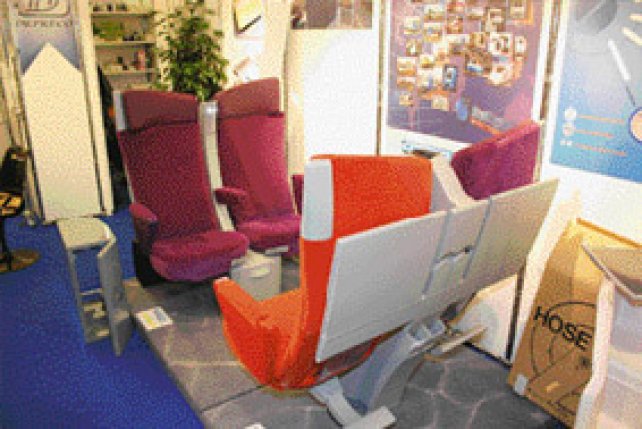
Between 29 November and 1 December 2005 the second edition of Railway Interiors Expo 2005 was held in Köln. The trade fair was attended by 2,524 visitors from 45 countries, and there were 170 exhibitors. As its title suggests, the event serves to promote interior fittings for all types of rail and urban public transport vehicles. We present to you a selection of what was on show.
MBD Design of Bagnolet, France, and manufacturer Compin presented their "Calypso" first class and "Hydra" second class seats, designed for refurbished TGVs (183 vehicles). At the stand shared by Compreforme and Deprecq, Stratiforme Industries (specialists in composite materials) exhibited part of a WC module interior for the TGV POS trains (middle photo) and the emergency front end door for trains operating on the Circle Line automatic metro in Singapore (right).
Photo: Tomáš Kuchta
IGCT - A New Solution For Rail Vehicles
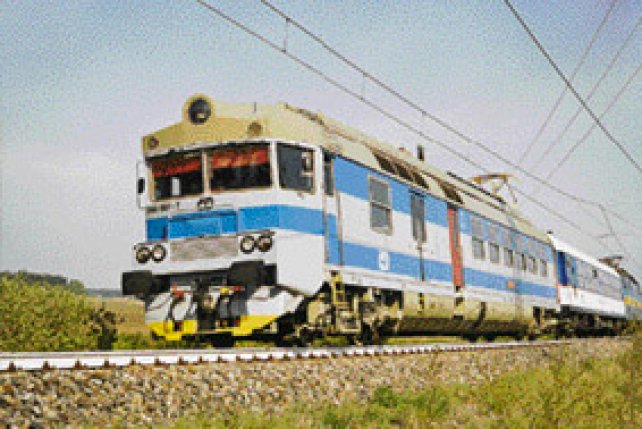
The IGCT turn-off thyristor system for traction equipment has now been in use for nearly two years on some ČD Class 560 EMUs, and it is functioning well. It introduces two novelties into ČD motive power technology - modern IGCT converter control and compatible rectifiers. Thanks to the latter, when running off 25 kV 50 Hz a locomotive fitted with IGCT consumes a virtually sinusoidal current, and at a power factor close to 1.
The first ČD vehicle to be fitted with IGCT components, EMU power car 560.007. Seen here during trials at the Cerhenice test circuits on 27 April 2004.
Photo: Ivo Valent
RegioNova
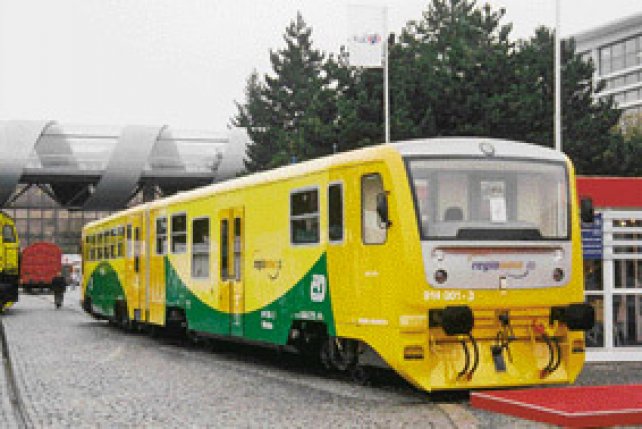
During the 2005 Brno International Engineering trade fair, Pars nova and âD unveiled their prototype Class 814 DMU, rebuilt from a Class 810 railcar and Class 010 trailer. The presentation event also involved the train receiving the brand name RegioNova. This reflects both its intended sphere of operation - on secondary and rural lines - and the fact that it offers new standards of comfort and quality for the travelling public. Over a three-year period ČD plans to rebuild many more railcars and trailers to create over 100 RegioNovas.
At the Brno engineering trade fair a resplendent 814.001 awaits its naming ceremony on 3 October 2005.
Photo: Jaromir Pernička
Estonia - Cold War On Rails?
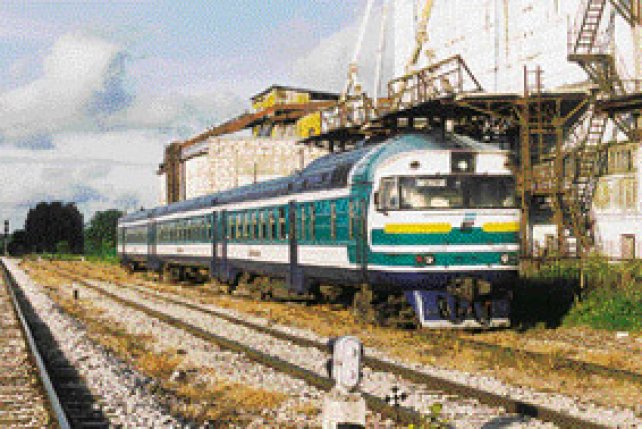
In 1991 Estonia regained its independence from Russia and in January the following year the State-owned railway company Eesti Raudtee was founded. In August 1997 this was transformed into a joint stock company, its name unchanged, and with the State as its sole shareholder. This heralded the start of a radical transformation of the Estonian rail network.
An Edelaraudtee DMU. This is DR1B-3716, on shed at Rakvere on 30 June 2005. Its next duty will be the following day, providing a service to Tallinn. Rakvere is another station on EVR’s Tallinn to Narva line, about 110 km east of the capital. Services provided by Elektriraudtee and Edelaraudtee in the Tallinn district are quite frequent, but elsewhere in Estonia passenger services are sparse. This would appear to reflect the low average density of population - around 30 per km2 - rather than the effects of privatisation.
Photo: Petr Štefek
Cable Installation In An Extreme Environment: The Lötschberg Tunnel
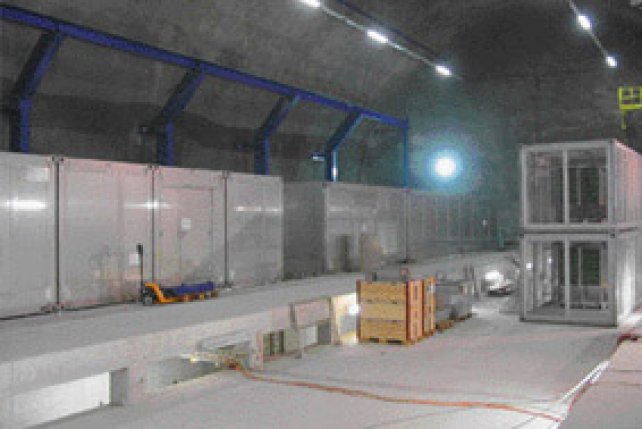
When inaugurated in 2007 the Lötschberg base tunnel will be the third longest in the world, the second longest in Europe, and the longest in continental Europe. Two single-track 35 km bores are being built between Frutigen in the north and Raron in the south. A railway tunnel of such length requires a considerable quantity of wiring and cabling, for telecommunications, lighting, and traction current. Nexans is one of the subcontractors for the consortium installing cabling in the tunnel, and in this article we examine in detail the company’s activities here.
This is the underground construction base at Lötschen in the eastern bore, with the containers in place, on 6 October 2005.
Photo: Libor Geisler
Berlin Hauptbahnhof
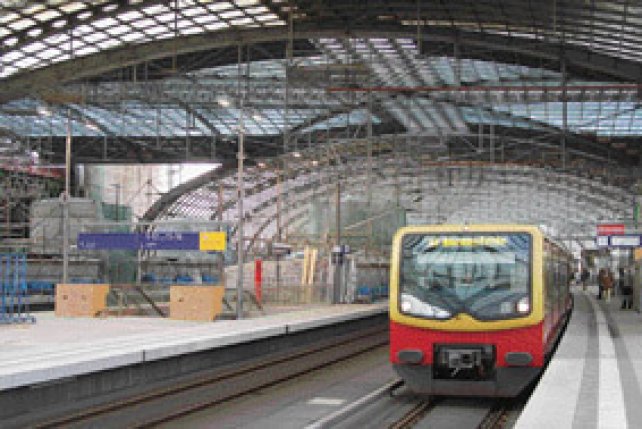
When the Wall came down in 1989, Berlin was provided with an unique opportunity to reorganise its transport in readiness for the new millennium. Work has been in progress ever since as the two halves of the city merge into a whole. On 28 May 2006, when Berlin Hbf. - Europe’s largest rail interchange - is inaugurated after fifteen years of planning and construction, the German capital will for the first time in its history be able to boast a centrally-located principal station, which while serving as an interchange between existing east-west and new north-south routes, both local and long-distance, should also help to increase network capacity within the city.
The first trains to call at Berlin Hbf. were the distinctive red and yellow S-Bahn EMUs, a Class 481 featuring in this picture taken on 30 Novem-ber 2005.
Photo: Sebastian Schrader
And much more!
Cover of 6/2005
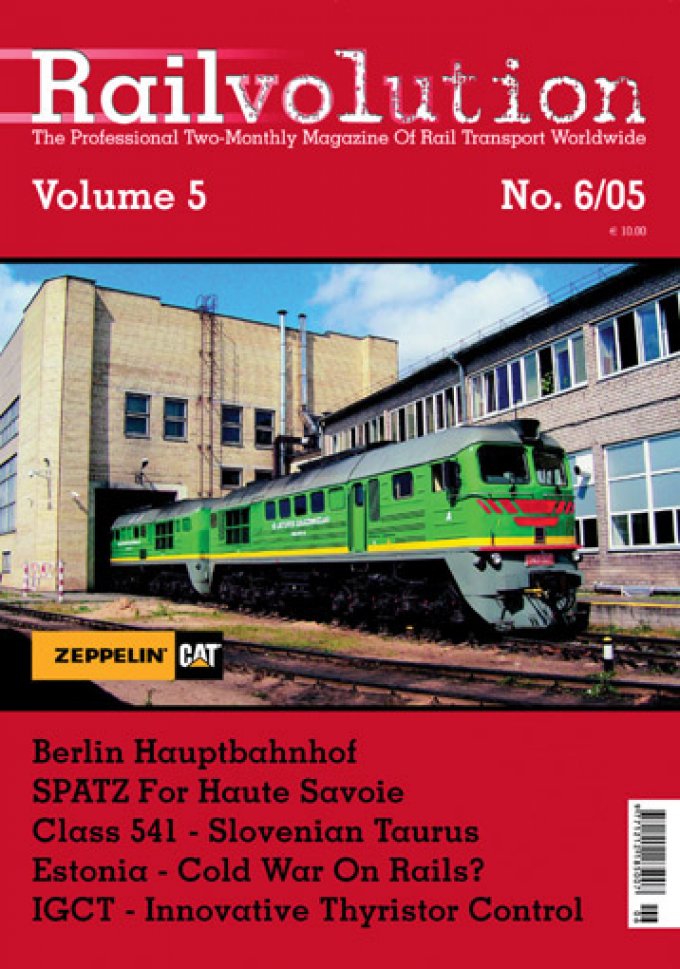
Poster
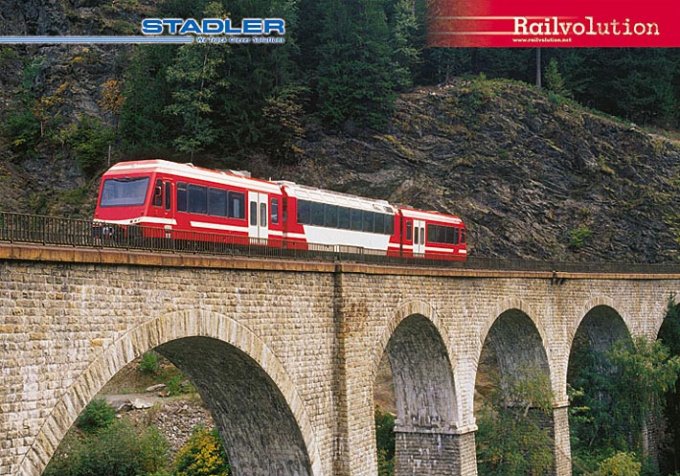
Features: Stadler SPATZ EMU Z-851 crosses on a test run from Chamonix on 30 September 2005.
